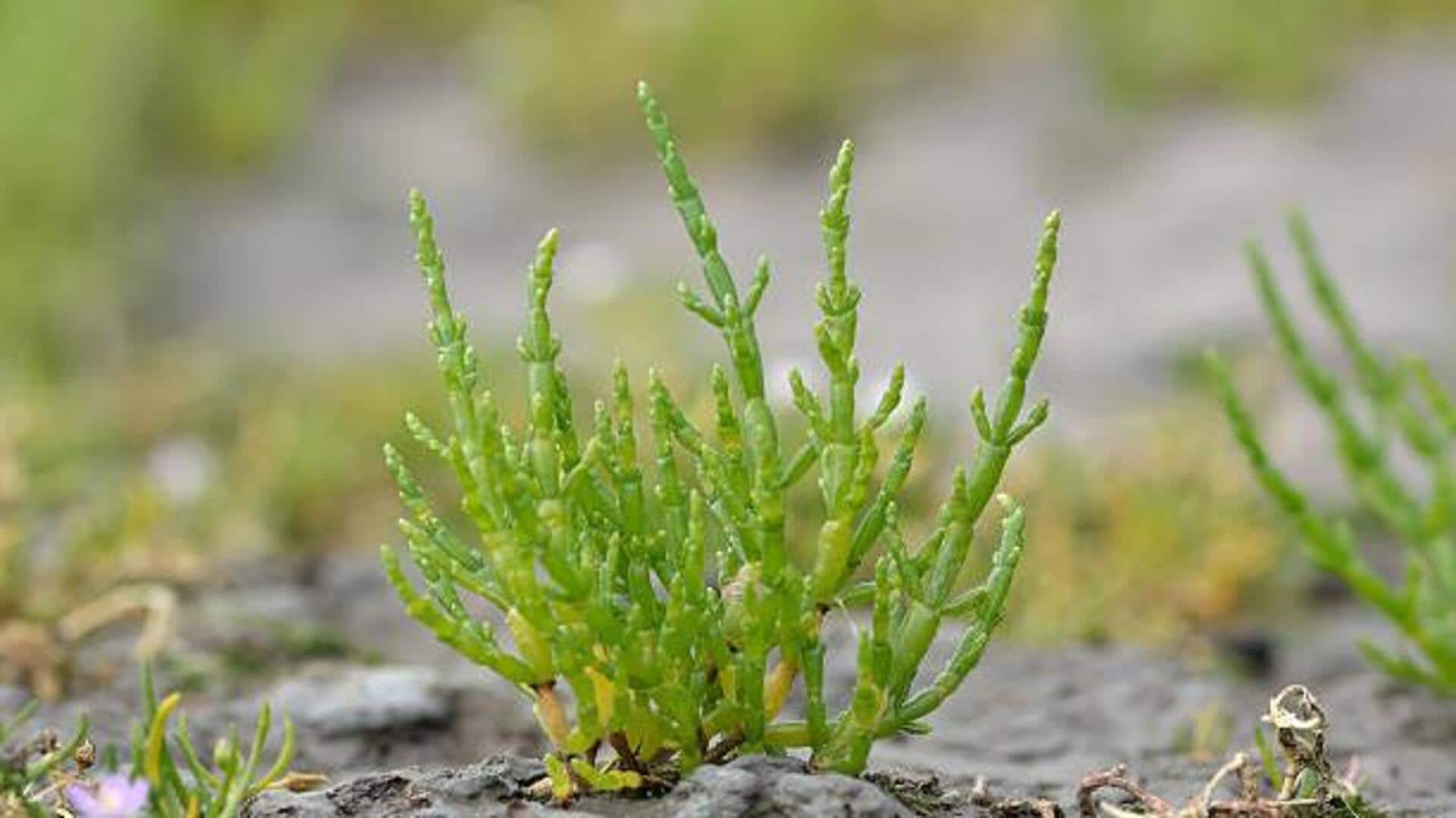
Glasswort plant: Nutrition, uses, and more
What's the story
African glasswort, a hardy plant that grows in salinity, is making waves for its amazing properties. Famous for growing in brutal conditions, the plant has a lot more to offer from its native habitat. From environmental benefits to health-related uses, African glasswort has some unique characteristics that have caught the attention of researchers and plant lovers alike. Here's what makes this plant superhero-like.
#1
Environmental benefits of glasswort
African glasswort is vital to coastal ecosystem as it stabilizes soil and prevents erosion. Its salt-loving nature makes it a great candidate for the restoration of degraded land and fighting desertification. The plant's dense roots bind soil particles together and prevent erosion due to wind and water. It also contributes to carbon sequestration by absorbing carbon dioxide from the atmosphere, thus contributing to fighting climate change.
#2
Nutritional potential of glasswort
The nutritional profile of African glasswort is impressive given its high content of essential minerals and vitamins. It is rich in calcium, magnesium, potassium, and vitamin C. These nutrients are essential for keeping our bodies healthy (bone health, immune support, etc.). Additionally, its low-calorie content makes it a desirable choice for anyone looking for nutritious yet light dietary options.
#3
Medicinal properties explored
Research into the medicinal properties of African glasswort has shown promising results. The compounds found in the plant exhibit antioxidant activity, which can help protect cells from free radicals' damage. Additionally, preliminary studies suggest anti-inflammatory effects that could be beneficial in managing certain health conditions. While more research is needed to fully understand these properties, initial findings highlight its potential as a natural remedy.
#4
Culinary uses expand horizons
In culinary circles, African glasswort is becoming a sought-after ingredient thanks to its unique flavor profile and texture. Often used as a garnish or seasoning in various dishes like salads or soups, it adds a salty crunch without overpowering other flavors on the plate. Chefs love the versatility they get when incorporating this plant into their creations, exploring new taste combinations. This keeps meals healthy, balanced, and the overall experience delightful for diners alike.